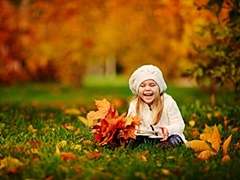
Welcome to Hemlock and Canadice Lakes!
Barns Businesses Cemeteries Churches Clinton & Sullivan Columns Communities Documents Events Time Line Fairs & Festivals Farm & Garden Hiking Homesteads Lake Cottages Lake Scenes Landscapes Library News Articles Old Maps Old Roads & Bridges Organizations People Photo Gallery Podcasts Railroad Reservoir Schools State Forest Veterans Videos
|
“Nature in the Little Finger Lakes” by Angela Cannon Crothers |
|
|
Still Hunting Angela Cannon-Crothers November 2016 I remember a co-teacher at an environmental education center where I worked once who reminded me of the Lorax: all wild hair and beard, short of stature, but large on words. I recall him telling the children how he had spent his Sunday sitting under an oak tree all day. How it was one of the most productive days he had ever had. In all honesty, I was nonplussed and thought him lazy. It took me a few years to come to understand the full depth of his meaning. A hunter sits in quiet observation. All senses humming. The hunter’s ears are alert to each scrunch of fallen leaves, the alarm call of a red squirrel, or the wistful whistle of a migrating white-throated sparrow. The early morning hunter on November 14th may see the Supermoon (the full moon coming closest to the earth in its orbit this year) just setting at 6:26 a.m. Sitting in nature while the sun or moon incrementally cross the sky is a practice of more than observation, but of patience and mindfulness. You cannot hurry the hunt, nor can you hurry the rise of whichever sky luminary directs you. You must wait. The mental and spiritual benefits of exploring each moment as they come are similar to meditation. With my Forest School children, I have created a routine of Still Hunting as part of our school day, and it seems to be something they look forward to. All around the camp that is our tree-filled classroom they each head off to a spot that is their own special Still Hunting place; in the words of John Muir, “to sit in solitude, to think in solitude, with only the music of the stream and the cedar to break the flow of silence.” Some are up in the trees, as Muir had done riding out a storm. One child lounges along a muscle wood branch like a panther in repose. Others sit banked behind the roots of large trees, or in the opening to a creek-fed meadow of sawgrass and spent goldenrod and asters. I am amazed when I tell them we will try for minutes of quiet sitting, and they ask for 10. To go from busy and boisterous mud jumping, firewood sawing, and games to total silence with 16 or more youngsters is a stunning experience. For a few moments the woods is just the sound of itself, and we become part of its echo. Sometimes a hawk flies over. Or the sound of a peeper frog practicing its wake-up call for next spring rings in. The sweet scent of the rot of fallen leaves rises. The wind gives a pinch to our cheeks, like what a favorite aunt might do. For some of the children it is time to converse with the trees in a silent tongue we adults have forgotten. Having taken up hunting last year, I understand a new dimension to what stillness in the outdoors involves. The old adage says it’s better to be in my tree stand thinking about God than in church thinking about hunting. Dressed for the weather, I find it is a soothing activity of timeless non-activity, of letting thoughts come, and then letting them go. It is a focus of tuning in to our environment and tuning out of the busy-ness of doing all the time. This is the place in nature where the outer landscape and our inner landscape meet. I believe that co-teacher of years ago was telling the children the worthwhileness of just being, of how immensely productive such inactivity in nature is for our souls. Still Hunting reminds me of how a natural flow can be so much more productive than the busiest of moments. There is a lot to learn from quiet. From observation. From stillness in the out-of-doors.
|
||
|
Editor’s Note: Angela Cannon Crothers is a naturalist and writer who teaches at Finger Lakes Community College and with The Finger Lakes Museum. Here are some columns that she has written about the Little Finger Lakes. Her columns also appear in the Lake Country Weekender newspaper.
|
||
